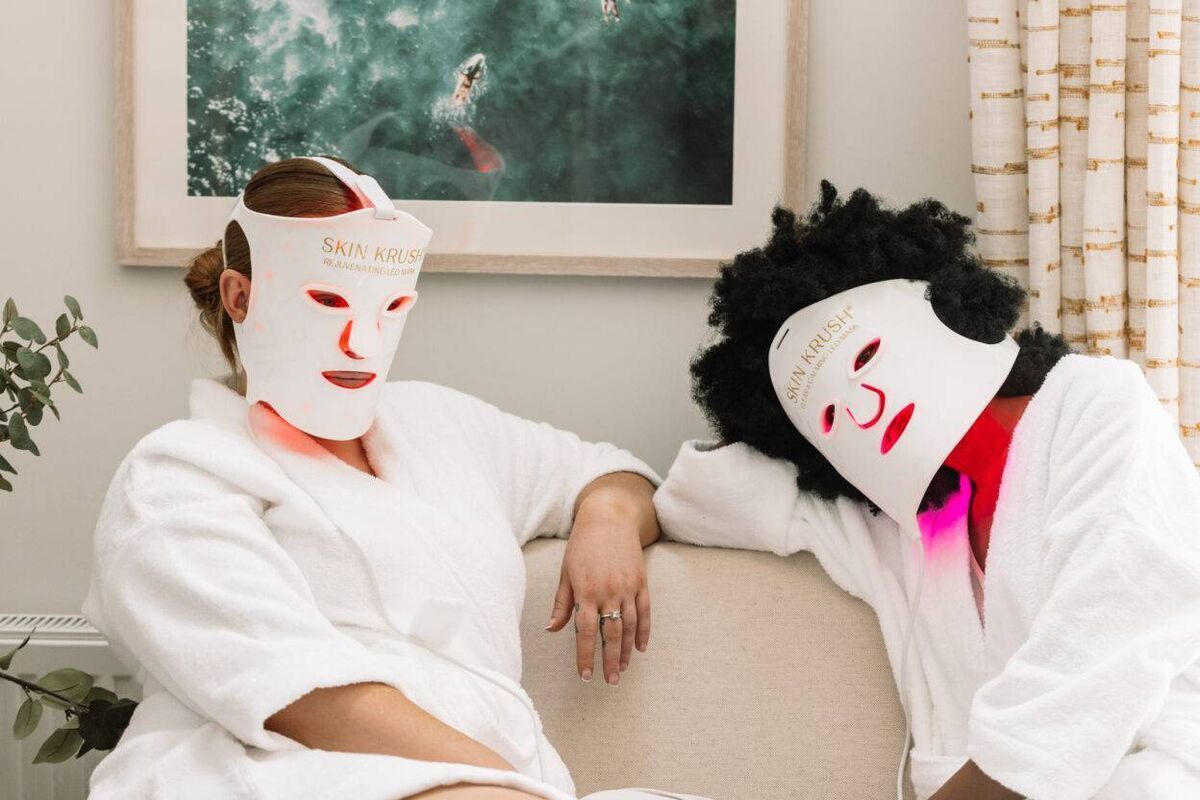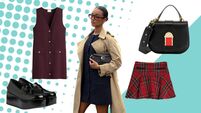Thinking of investing in an LED mask? Here's everything you need to know

You can’t have failed to notice the surge in popularity of LED masks on social media. Promising brighter, smoother, and calmer skin, these futuristic-looking devices have become a staple of at-home skincare. But do they really work, and are they worth the price tag?
You can’t have failed to notice the surge in popularity of LED masks on social media. Promising brighter, smoother, and calmer skin, these futuristic-looking devices have become a staple of at-home skincare. But do they really work, and are they worth the price tag?
LED (light-emitting diode) therapy works by delivering specific wavelengths of light energy into the skin to stimulate natural cellular processes. This mechanism, known as photobiomodulation, can trigger collagen production, improve circulation, and reduce inflammation.
Different colours of light target different concerns: Red light (630–660 nm) boosts fibroblast activity, promoting collagen and elastin for firmer, smoother skin. Near infrared light (around 830 nm) penetrates deeper, supporting cellular repair and circulation. Blue light (415 nm) works closer to the surface, killing acne-causing bacteria and reducing oil production.
Research around the use of LED in skincare varies in quality, but there’s growing evidence to support its benefits. A 2005 clinical trial using red and near-infrared therapy reported that over 80% of participants experienced softer fine lines and improved tone after 12 weeks. More recent research continues to strengthen the case: a 2025 meta-analysis of red and blue at-home devices found they were effective in treating mild-to-moderate acne.
Sceptics point out that most high-quality clinical studies are done with professional-grade LED machines used by dermatologists — not consumer masks, and, because at-home devices are sold as cosmetic products, not medical devices, they aren't held to the same standards.
“Results depend on wavelength, dose, and consistency,” explains Dr Edel Woods, owner of The Ora Clinic. “The best supported wavelengths are around 630–850 nm for collagen stimulation and 415 nm for acne reduction."
Dr Caitriona Ryan, consultant dermatologist at the Institute of Dermatologists and clinical professor at University College Dublin says at-home devices "don’t replace in-clinic lasers or injectables" but they can "meaningfully improve skin health when used consistently.”
“LED masks are a valuable at-home adjunct for maintaining skin quality, reducing inflammation, and tackling early signs of ageing,” she says.
Dr Woods adds that she is "a big proponent of LED and all light technology."
"Larger studies are still needed, but what we see in practice is encouraging."
With dozens of options on the market, choosing the right LED mask can be confusing. Here's a summary of what the experts advise you look for before making a purchase.
- Wavelengths: Ideally 630–660 nm (red), 830 nm (near-infrared), and 415 nm (blue)
- Fit: Look for a lose, even fit, to ensure full-face light coverage
- Eye protection: Built-in or supplied, to protect your eyes from the light's glare
- Regulatory approvals: FDA clearance or CE marking
- Transparent data: Reputable brands cite published studies or clinical testing
“Be wary of devices that are very cheap or vague about specifications,” warns Dr Ryan. “They may lack the wavelength precision or power output needed for real results.”
Consistency is crucial. Most experts recommend using an LED mask three to five times per week for 10–20 minutes per session. Visible improvements in texture, tone, and glow usually appear within four to eight weeks. After that, one or two weekly sessions are enough to maintain results.
“I use the CurrentBody Series 2 mask three times a week for 10 minutes," Dr Woods says. "It’s convenient, comfortable, and easy to integrate into a routine.”
LED therapy is generally safe, but certain groups should take care. People with photosensitive conditions or on photosensitising medications should consult a dermatologist first. Both experts also caution that those with melasma or pigmentation issues should avoid blue light devices, which can worsen discolouration. Never use LED masks over open wounds or active skin infections.

Created by Irish nurses Sinéad Gallagher and Jeanette Dunne, Skin Krush brings professional-grade phototherapy to your home with the first Irish made devices. Two options are available. The Rejuvenating LED Face Mask uses Red (633 nm) and near-infrared (830 nm) light to boost collagen and radiance. The Clear and Calming Mask combines Blue (415 nm) and Red (633 nm) light to calm acne and inflammation. Each mask requires only 10 minutes, three to five times weekly, and is available via Renew Skin Clinic, Avoca Stores, and the Institute of Dermatologists. €350.

This cult favourite has been upgraded with 236 LED bulbs and flexible silicone for a snug fit. It combines Red (633 nm), near-infrared (830 nm), and a new deep near-infrared (1072 nm) wavelength for enhanced anti-ageing benefits. Results are visible in as little as four weeks, and the lightweight, hands-free design makes it ideal for multitasking. Available in Harvey Norman and online at currentbody.ie. €450.

Launched in Ireland in October 2025, this innovative mask merges LED therapy with cryo-inspired cooling. Red, Blue, and Deep Infrared settings tackle fine lines, acne, and dullness, while the under-eye InstaChill feature depuffs and firms. Clinical data claims radiance increases by 34% in eight weeks and acne improves by 21% in four. Stocked in Arnotts and Brown Thomas. €350.







